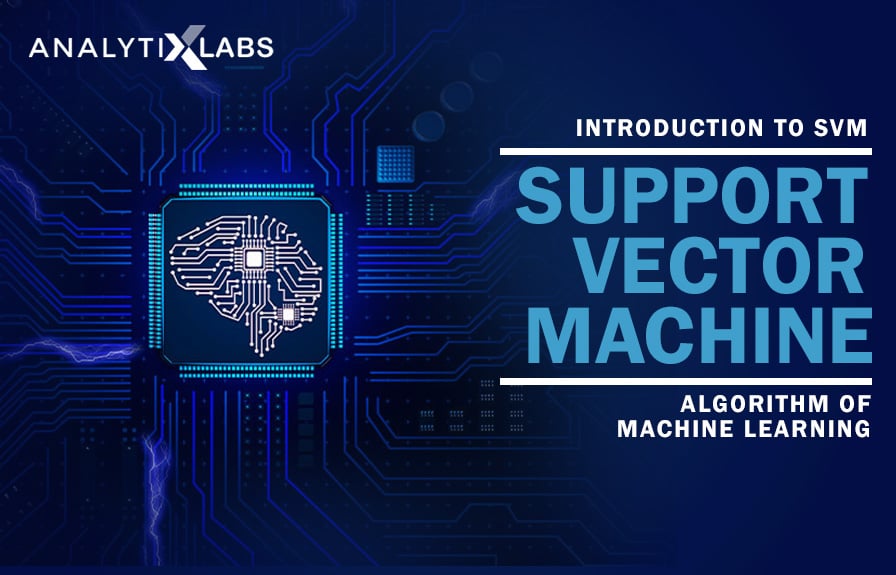
In the grand scheme of analytics, certain algorithms emerge as true champions in the realm of prediction. Among them. Support Vector Machines (SVM) stand as sentinels of classification, casting their mathematical prowess to discern patterns, make decisions, and shape the future. Yet, behind the curtain of their seemingly seamless predictions lies a complex symphony of SVM algorithm steps – a dramatic interplay of mathematics, optimization, and errors that orchestrates their every move. This piece will try to explain different aspects essential to SVMs. including their purpose, practicality, essentiality, and implementations for a holistic, zoomed-out view.
Decoding Class Prediction
In the realm of analytics, Support Vector Machines (SVM) stand as stalwart algorithms for classification tasks. These mathematical marvels are adept at assigning classes to data points, but the intricacies of their class prediction mechanism often elude casual observers. SVM divides classes into +1 and -1, a seemingly simple dichotomy that conceals a world of computational sophistication. By discerning the underlying principles, we unravel the cryptic process that empowers SVM’s confident class assignments.
From real-world ordeals to simple Equations
The inception of any contemporary analytics endeavor lies in translating real-world quandaries into mathematical expressions. Here, SVM serves as the bridge that converts these challenges into solvable equations involving unknowns. By comprehending the nuances of this transformation, we gain insight into how SVM can tackle diverse problems, from image recognition to medical diagnosis. The journey from business context to mathematical abstraction is the compass that guides SVM toward predictive mastery.
The Price of Perfection
Perfection comes at a cost, and in SVM’s world, that cost manifests as the intriguing “cost function.” While striving for impeccable classification where the cost is zero for accurate predictions, SVM recognizes the inevitability of errors. This insight births the notion of loss, which quantifies the divergence between predicted and actual classes. Here, we delve into the heart of SVM’s decision-making process, understanding how it gauges the toll exacted by errors on its quest for predictive excellence.
Gradients and Calculus
The gears of SVM’s predictive machinery are set in motion through the manipulation of weights, and the key to this manipulation lies in the realm of calculus. Advanced mathematical concepts, including partial derivatives, wield their influence to calculate gradients that chart the trajectory toward optimal weight configuration. By peering into this mathematical symphony, we gain an appreciation for the intricacies that drive SVM’s gradual refinement, aligning its predictions ever closer to reality.
Navigating Errors
Errors, though inevitable, do not deter SVMs from predicting with finesse. The loss function is a compass that guides SVM through the intricate terrain of misclassification. This function quantifies the missteps, enabling SVM to iteratively adjust its course and refine its predictions. Through the lens of this loss function, we witness SVM’s adaptive nature, learning from errors to forge a path toward enhanced accuracy. In this exploration, we unravel the intricate tapestry that stitches together errors, losses, and SVM’s enduring quest for predictive prowess.
Regularization’s Role in Gradient Updates
Regularization’s role is to maintain harmony between precision and complexity. When the classification is flawless, gradients are tuned exclusively by the regularization parameter, ensuring a gentle adjustment that safeguards against overfitting. But when misclassification rears its head, the loss function steps into the spotlight, guiding SVM’s movements toward recalibration. Here, we witness the dynamic interplay that allows SVM to gracefully balance its pursuit of perfection.
Conclusion
The journey to mastering Support Vector Machines reveals a symphony of mathematical intricacies and computational finesse. From classifying with confidence to unraveling the labyrinth of loss functions, each step in SVM’s process carries profound insights into the realm of predictive algorithms. As we navigate the realms of calculus, optimization, and error mitigation, we uncover the artistry that underpins SVM’s predictive power. With each layer of understanding peeled away, we stand poised to harness SVM’s potential and wield its predictive might in a myriad of applications across the ever-evolving landscape of machine learning.